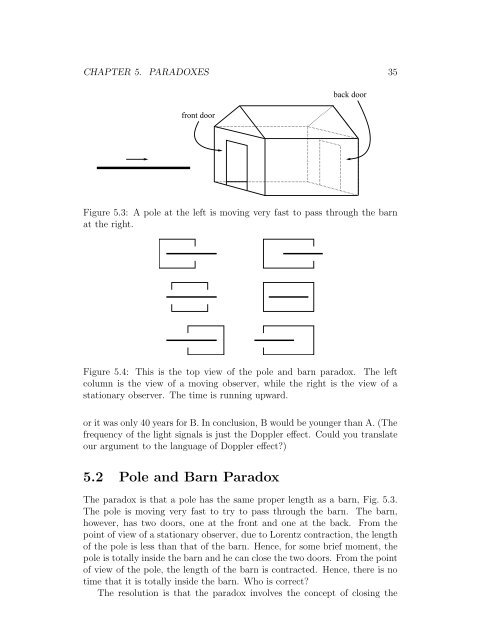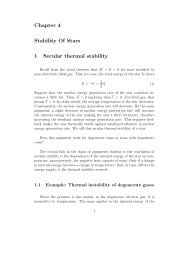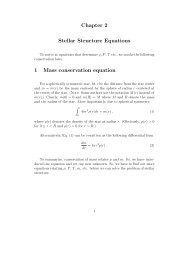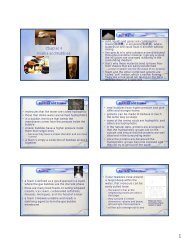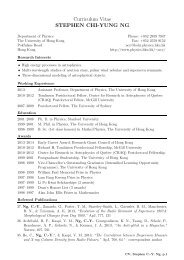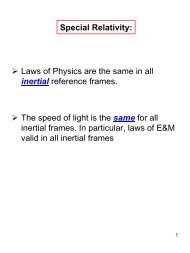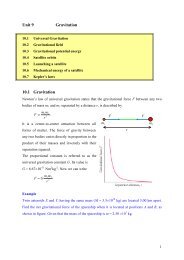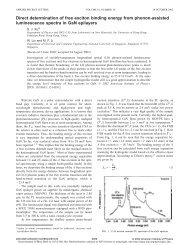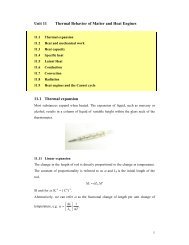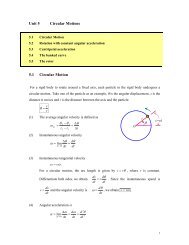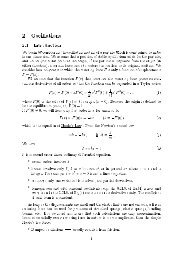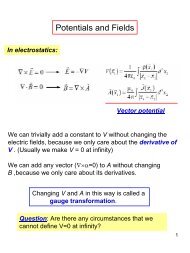here - Department of Physics, HKU
here - Department of Physics, HKU
here - Department of Physics, HKU
You also want an ePaper? Increase the reach of your titles
YUMPU automatically turns print PDFs into web optimized ePapers that Google loves.
CHAPTER 5. PARADOXES 35<br />
front door<br />
back door<br />
Figure 5.3: A pole at the left is moving very fast to pass through the barn<br />
at the right.<br />
Figure 5.4: This is the top view <strong>of</strong> the pole and barn paradox. The left<br />
column is the view <strong>of</strong> a moving observer, while the right is the view <strong>of</strong> a<br />
stationary observer. The time is running upward.<br />
or it was only 40 years for B. In conclusion, B would be younger than A. (The<br />
frequency <strong>of</strong> the light signals is just the Doppler effect. Could you translate<br />
our argument to the language <strong>of</strong> Doppler effect?)<br />
5.2 Pole and Barn Paradox<br />
The paradox is that a pole has the same proper length as a barn, Fig. 5.3.<br />
The pole is moving very fast to try to pass through the barn. The barn,<br />
however, has two doors, one at the front and one at the back. From the<br />
point <strong>of</strong> view <strong>of</strong> a stationary observer, due to Lorentz contraction, the length<br />
<strong>of</strong> the pole is less than that <strong>of</strong> the barn. Hence, for some brief moment, the<br />
pole is totally inside the barn and he can close the two doors. From the point<br />
<strong>of</strong> view <strong>of</strong> the pole, the length <strong>of</strong> the barn is contracted. Hence, t<strong>here</strong> is no<br />
time that it is totally inside the barn. Who is correct?<br />
The resolution is that the paradox involves the concept <strong>of</strong> closing the


